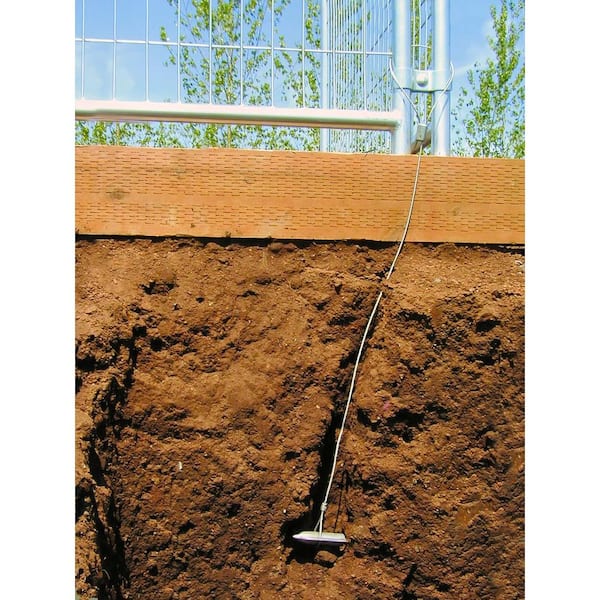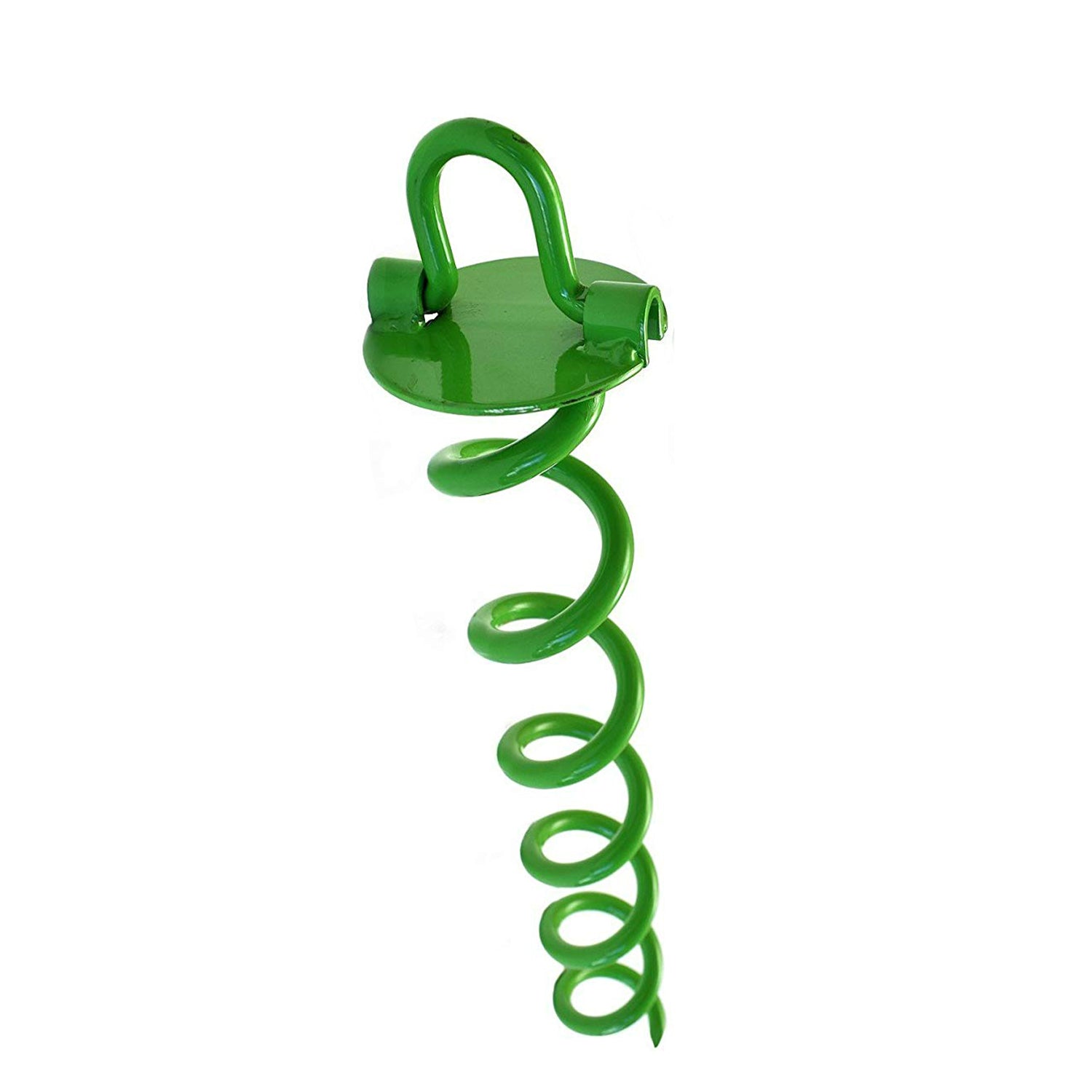The Ultimate Checklist for Installing and Setting Up a Ground Anchor
The Ultimate Checklist for Installing and Setting Up a Ground Anchor
Blog Article
Check Out the Various Kinds Of Ground Support for Your Next Project
From auger supports, which excel in varied soil problems, to risk anchors designed for momentary installations, the alternatives are various. Furthermore, concrete and screw anchors existing one-of-a-kind benefits in details situations, while deadman supports are tailored for applications calling for resistance to side pressures.

Auger Anchors
Auger anchors are a prominent choice in various building and landscaping tasks due to their special style and effective securing capacities. These anchors are composed of a helical screw-like shaft that is driven right into the ground, permitting a stable and safe hold. The spiral layout promotes very easy setup and makes the most of resistance against lateral forces, making auger anchors especially efficient in applications such as fence, momentary structures, and erosion control.
The installation process of auger supports is relatively simple. Auger supports can be quickly removed and reused, which includes to their cost-effectiveness and sustainability.
One of the substantial benefits of auger supports is their capability to disperse tons equally throughout the surrounding soil, minimizing the danger of dirt disturbance and minimizing ecological impact. Furthermore, they are much less at risk to loosening up or heaving over time contrasted to conventional anchoring approaches. As a result, auger anchors are a superb selection for tasks requiring sturdy and trustworthy anchoring services.

Stake Anchors
When it comes to protecting structures in a range of outdoor applications, stake anchors supply a reputable and straightforward service. These anchors are usually built from durable materials such as steel or aluminum, made to hold up against environmental tensions while supplying ideal stability. Their simple design enables fast installment, making them a perfect selection for long-term or temporary anchoring demands.
Stake supports are specifically valuable in protecting camping tents, canopies, and various other light-weight frameworks against wind and weather condition. They work by being driven into the ground at an angle, developing a strong hold that stands up to pull-out forces - Ground Anchor. The effectiveness of risk anchors depends upon numerous factors, including dirt type, dampness content, and the angle of installation
For included safety, several stake anchors include attachment factors for ropes or straps, enabling tension modifications as required. In applications such as landscaping or building and construction, they can successfully support tools or structures on unequal terrain. In general, stake anchors supply a versatile and affordable option for securing numerous exterior installations, making them a preferred selection for contractors and do it yourself fanatics alike.
Concrete Anchors
Concrete anchors give a robust service for securing frameworks to concrete surface areas, guaranteeing stability and safety in different applications. These anchors are crucial for tasks varying from property buildings to massive industrial installments. They are available in various types, including expansion supports, adhesive anchors, and undercut supports, each developed for details load demands and environmental conditions.
Sticky supports utilize high-strength epoxy or resin to bond the anchor to the concrete, providing superior load-bearing capabilities, especially in split concrete circumstances. Undercut anchors create a special form within the concrete, offering extraordinary holding power, especially in applications where tensile loads are prevalent.
When implemented correctly, concrete anchors dramatically enhance the architectural honesty of numerous jobs, making them indispensable in modern-day construction practices. Comprehending the particular needs of your task will help in selecting the ideal kind of concrete support for the task.
Screw Anchors

Screw anchors are a flexible fastening solution that can be properly utilized in a range of applications where conventional concrete anchors might not be adequate. These supports contain a helical design that allows them to be easily driven right into the ground, making them optimal for use in dirt and various other substratums. Their distinct framework gives outstanding holding power and resistance to pull-out forces, making them ideal for many jobs, from landscape design to architectural support.
Among the main advantages of screw anchors is their ease of installment. They require marginal equipment and can frequently be a fantastic read set up without the demand find out for excavation, which saves both time and labor costs. In addition, screw anchors can be gotten rid of and recycled, supplying a sustainable option for short-term applications.
Screw supports are especially useful in areas where dirt conditions are challenging, such as loosened or sandy dirts. Their ability to be installed at varying depths permits personalization based on particular project requirements. Generally, screw supports provide a efficient and reputable anchoring technique, making them a superb selection for specialists and designers seeking reliable options for their jobs.
Deadman Anchors
Deadman anchors function as a robust option for supporting structures in challenging problems, particularly where standard anchoring methods may drop short. These anchors contain large, heavy objects hidden underground, which create resistance against lateral forces. The style normally entails a horizontal element, such as a block of concrete or a steel plate, buried in the dirt, to which bands or cords are attached.
The efficiency of deadman anchors hinges on their ability to disperse loads over a bigger location, decreasing the risk of failing in unsteady dirt conditions. They are specifically beneficial in applications such as retaining walls, short-lived structures, and slope stablizing, where soil motion can compromise the honesty of the structure.
Installment of deadman supports requires mindful planning to ensure they are put at the right depth and alignment, optimizing their load-bearing capability. While they may call for even more labor and product than lightweight anchors, their integrity in adverse conditions makes them very useful for long-term jobs. Deadman supports are functional and can be adjusted to various applications, making our website them a go-to selection for designers facing unique challenges in their projects.
Conclusion
Auger anchors stand out in varied soil conditions, while stake anchors suit short-lived applications. For concrete surfaces, growth and sticky anchors give dependable alternatives, and screw supports provide convenience in challenging terrains.
Furthermore, concrete and screw anchors present special benefits in certain scenarios, while deadman anchors are tailored for applications calling for resistance to side forces - Ground Anchor.Auger anchors are a prominent selection in various building and landscape design projects due to their unique design and reliable securing abilities. They come in different kinds, consisting of development anchors, glue supports, and undercut anchors, each developed for details lots needs and ecological conditions
Adhesive supports utilize high-strength epoxy or material to bond the support to the concrete, offering exceptional load-bearing capabilities, especially in broken concrete scenarios. On the whole, screw anchors give a dependable and reliable anchoring approach, making them an exceptional option for engineers and specialists looking for efficient options for their projects.
Report this page